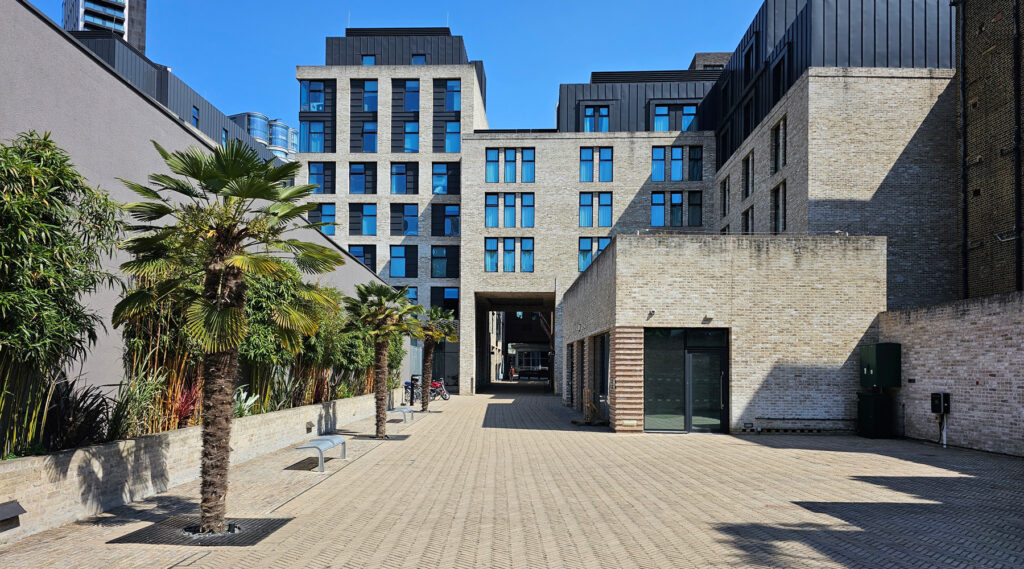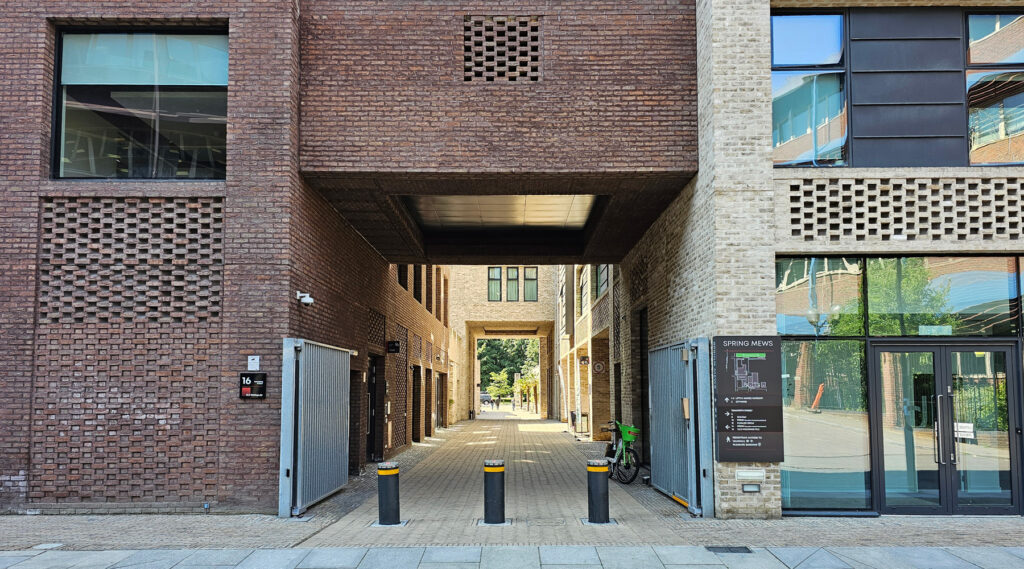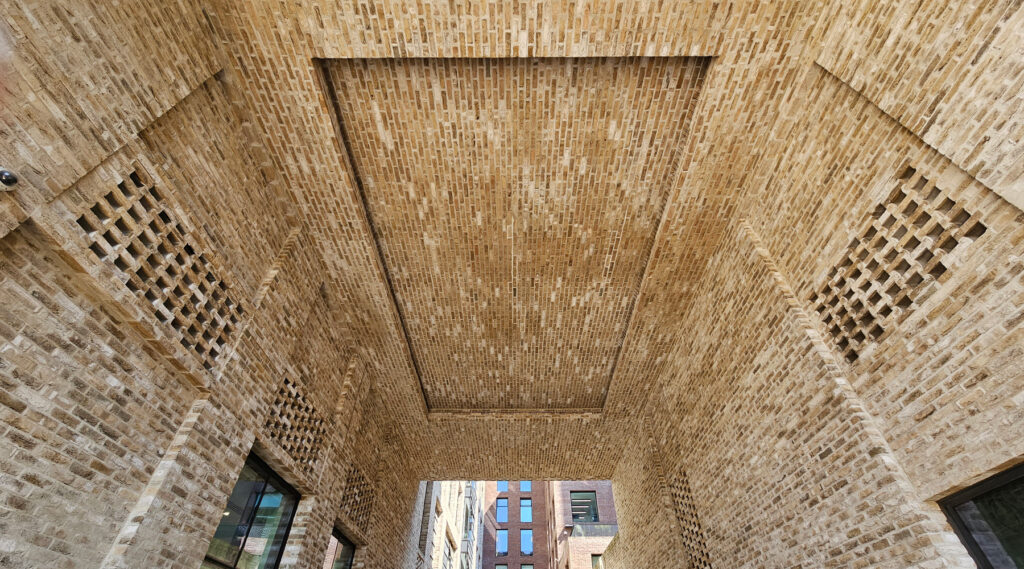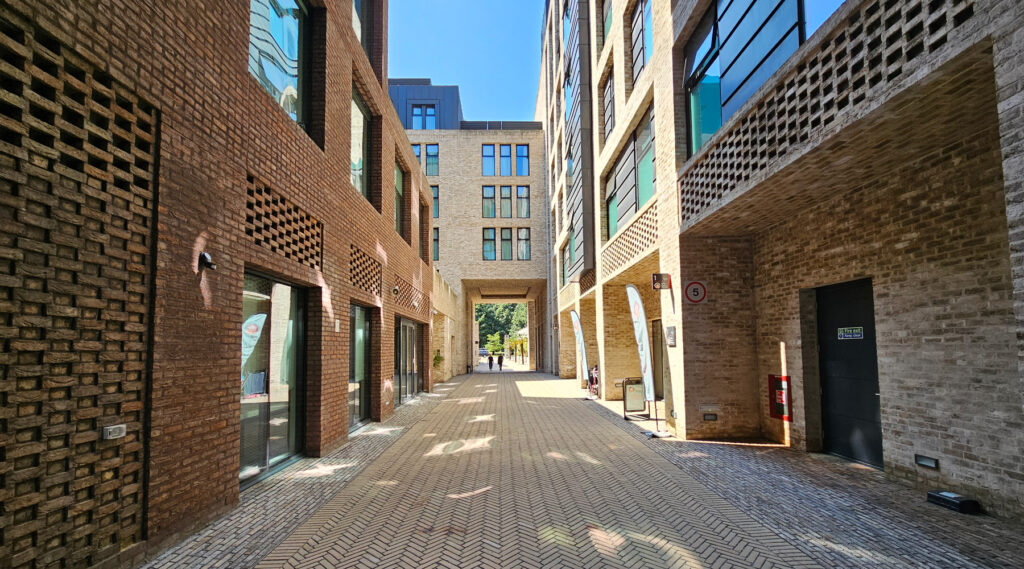This is a brand new alleyway and courtyard in Vauxhall that runs through the middle of a modern mix-use development in an area that’s never had public access before.
This patch of south London was still fields in 1746, but you can start to see some early housing development along the streets around the site by 1799. However, in 1875, most of the area was dominated by the Albert Gasworks, which burnt coal to produce town gas. Three large gasholders filled the site, but were demolished in the 1960s when North Sea Gas was replacing coal gas.
The site has been largely used for light industrial until recently.
Pretty much since it was turned from fields into factories, it’s been a sealed-off area, and as part of the agreement for the modern mix-used development that’s been created, they included a central courtyard-passageway that’s open to the public.
It could be partly due to arriving on a hot day, but it felt mediterranean in the courtyard space with the palm trees and tall grasses slowly growing up to obscure a blank wall.
Coupled with the mix of staggered-height buildings and pale brickwork, and you are almost overseas.
A nice feature is the pavement tiles — long narrow tiles laid out in a herringbone pattern instead of large square blocks, and designed for permeable drainage so that rainwater doesn’t just rush into drains but soaks slowly into the ground.
There’s also a pavement of sorts around the edges where the tiles switch directions and use a darker colour.
From the courtyard, the alley passes through a narrower passage, with overhanging sections of the buildings. A nice touch in one is the slightly recessed ceiling detail. It’s not necessary but relieves an otherwise monotonous slab of brickwork. Alas, the niche edges needed anit-pigeon spikes added afterwards.
The alley is lined with a few offices, entrance to the flats and student accommodation, and according to their website, the student halls has a mock-up of a tube train in the ground floor.
Opposite the mews on the eastern side is the office of the National Crime Agency, so you best behave yourself when visiting this particular alleyway.











The gasholders here were demolished long before the 1960’s natural gas replacement. They disappear from the mapping some time before 1915.
https://maps.nls.uk/view/103313387
I suspect the on-site production was replaced with gas from the nearby South Metropolitan Gas Company works at Vauxhall Bridge.
Wondering whether the reference to the Albert Glassworks is correct, or a case of your spellchucker getting its revenge. I mean I suppose a glassworks could produce gas as a by-product, but it doesn’t seem very likely.